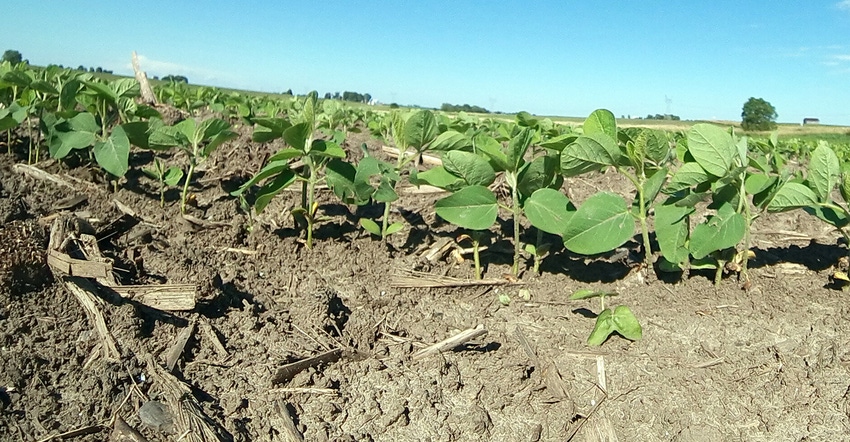
For now, it is illegal for soybean growers to use three dicamba products on dicamba-tolerant soybeans, following the June 3 revoking of U.S. Environmental Protection Agency product registration by the 9th Circuit Court of Appeals.
Three of four dicamba products had previously been approved for use on DT soybeans in Minnesota: Bayer’s XtendiMax with VaporGrip Technology, BASF’s Engenia Herbicide and DuPont FeXapan with VaporGrip Technology.
When the judicial branch issued its ruling last week, those three products were no longer federally registered and illegal to use, according to Josh Stamper, director of the Minnesota Department of Agriculture’s pesticide and fertilizer management division.
“There is a path for the appeals process, but that’s not likely to happen before June 20,” Stamper says.
June 20 was the last day growers in Minnesota could have applied dicamba, per MDA restrictions.
A fourth dicamba product, Tavium Plus VaporGrip, was not part of the 2018 two-year registration for Xtendimax, Engenia and FeXapan, so it can still be used with certain restrictions, MDA says.
The circuit court ruling found that EPA “substantially understated the risks” of the dicamba herbicides and “failed entirely to acknowledge other risks.” The ruling will effectively remove the product from the market.
The Minnesota Soybean Growers Association disagrees with the circuit court’s ruling.
“This decision is extremely disappointing, and we hope to see it rectified,” says Bob Worth, MSGA director, a Lake Benton farmer and chairman of MSGA’s Drift Task Force. “In Minnesota, we’ve been good stewards of this product and have led the way nationally on this issue.”
MSGA formed a farmer-led Drift Task Force in 2017 to examine the data and science behind suspected dicamba damage reports. It recommended MDA determine a cutoff date for dicamba application but did not advocate for any specific date. MDA determined the June 20 application deadline.
The EPA dicamba label limited application to within 45 days post planting or to R1, whichever came first.
Worth says that growers want new technologies to be used correctly and to continue to be available for use.
In 2019, up to 70% of the soybeans in Minnesota were estimated to be planted in DT soybeans, according to Minnesota Soybean.
Bayer, too, disagreed with the ruling and was assessing its next steps. The company created a new webpage to keep growers up to date on the issue.
MDA encourages soybean growers to visit its website for updates.
News of the court ruling hits growers hard as they deal with impacts of COVID-19 on their communities. One bright spot was planting this season. By the last week of May, 95% of the state’s soybeans were in the ground, 10 days ahead of average and 17 days ahead of last year. Soybean emergence had reached 73%, 18 days ahead of last year and 1 week ahead of average.
Looking ahead at weed control options, Stamper encourages growers to refer to University of Minnesota Extension guidelines on managing glyphosate-resistant weeds.
“Look at the guidance and consider layering of residual herbicides,” Stamper says. “That’s where we need to focus. There are tools out there to help during this tough situation.”
Learn more about using the herbicides Dual, Outlook, Warrant and Zidua by visiting U-M Extension online.
About the Author(s)
You May Also Like






